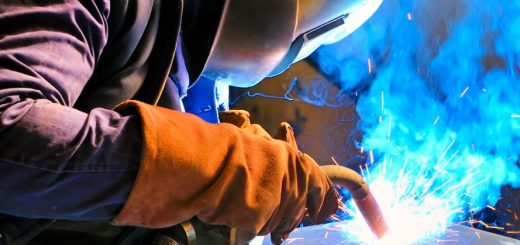Where does induction bending apply?

Induction bending (also referred to as hot bending, hot induction pipe bending or hot rolling) is a process in which heat is applied to a metal tube, steel pipe or a sheet of metal in order to bend the material into a desired shape or radius. It is generally an automated process carried out by a high-performance bending machine which works in conjunction with inductive heating. The temperature control has to be very precise here, as any variations from a set temperature may disrupt the whole process.
During the bending process, a bending machine clamps the pipe that is being bended and it continuously pushes it through an induction coil. The machine is set to the desired bending radius and the pipe follows naturally the curve of pressure force and is bent in a continuous process.
The steel of which the pipe is made is heated to between 800 and 2,200 degrees Fahrenheit and while the steel is still hot, pressure is applied to form the bend. The steel is then quenched with either air or water spray. The cooling process, which is quick and sharp helps to seal the bend and keep the pipe in its new shape, just as blacksmith would cool his tools after giving them the desired shape.
Main advantages of induction bending
There are certainly many ways to bend steel. However, with pipes it’s not that simple as with metal sheets. One of the main advantages of bending over welding is that there are fewer joining points, which in turn means that the pipes are less susceptible to damages and breakages.
Also, fewer joints means much smoother finish, that does not only look good, but is safer in the long run. When the pipes are joined by welding, the points where they meet must be sanded and smoothed out. There’s no such need here. But why does induction bending rule over other methods?
Induction bending machines have the ability to heat a specific area of the pipe.
This ensures that there is no damage or distortion done to other parts of the pipe, which normally would be visible only after the bend is completed. The method doesn’t use too much force either, so that only the part that is supposed to be bent is put under the pressure.
And since there is no need for high power, induction bending results in higher energy efficient systems. And last, but certainly not least, induction bending is a real time saver. After all, welding pipes or bending them in any other way, manually, would take much longer than sliding the pipe through a powerful machine.
Induction Bending Applications
Although pipes are the obvious choice, almost any metal or steel product on the market could be used put under the induction bending process. Thus, induction bending is often used in pipeline assembly as well as the metallurgy industry. Typically induction bending is used on large pipes such as petroleum, water or gas pipelines, but can also be used in making smaller instruments such as springs, screws and farming tools.

